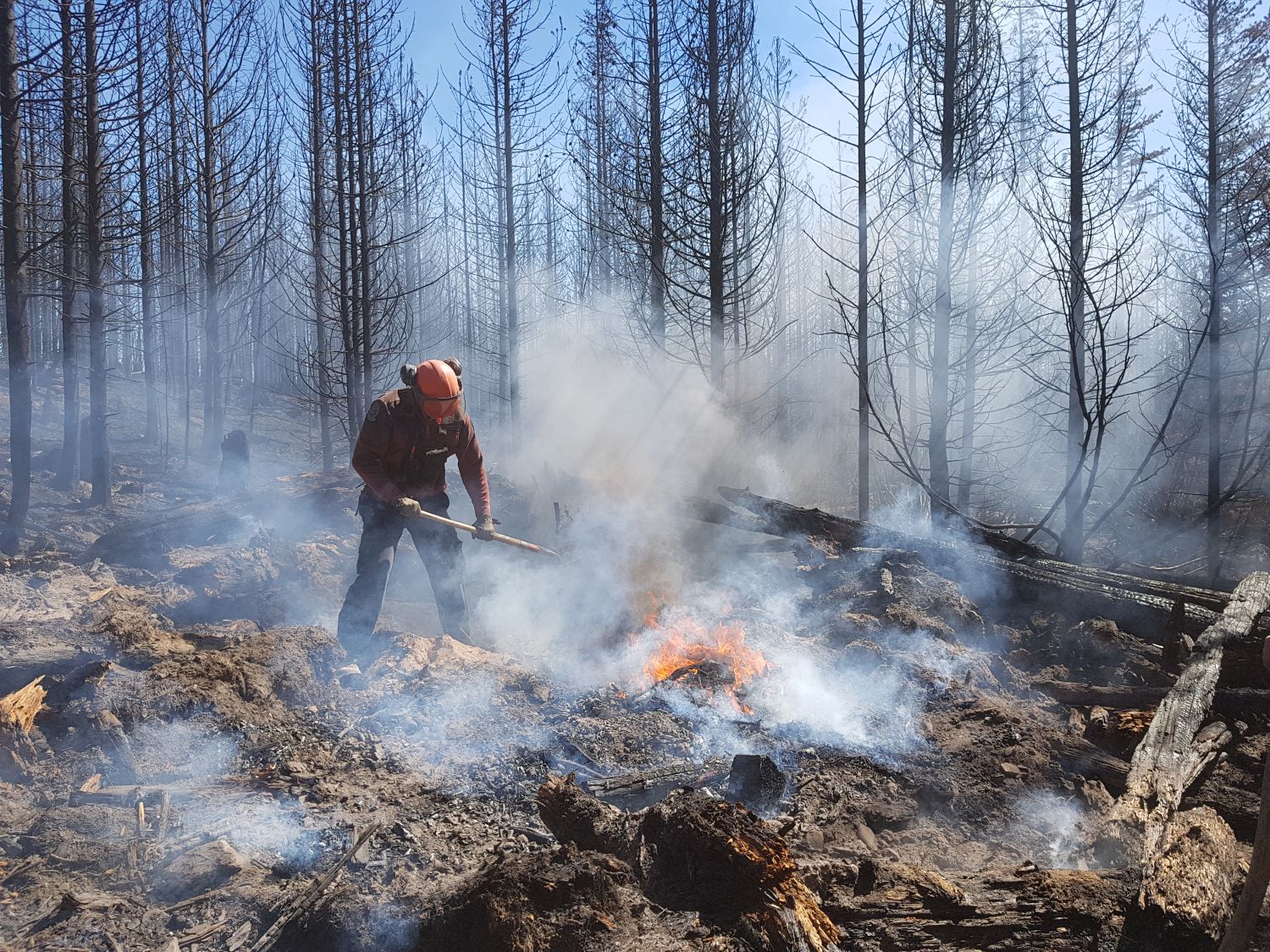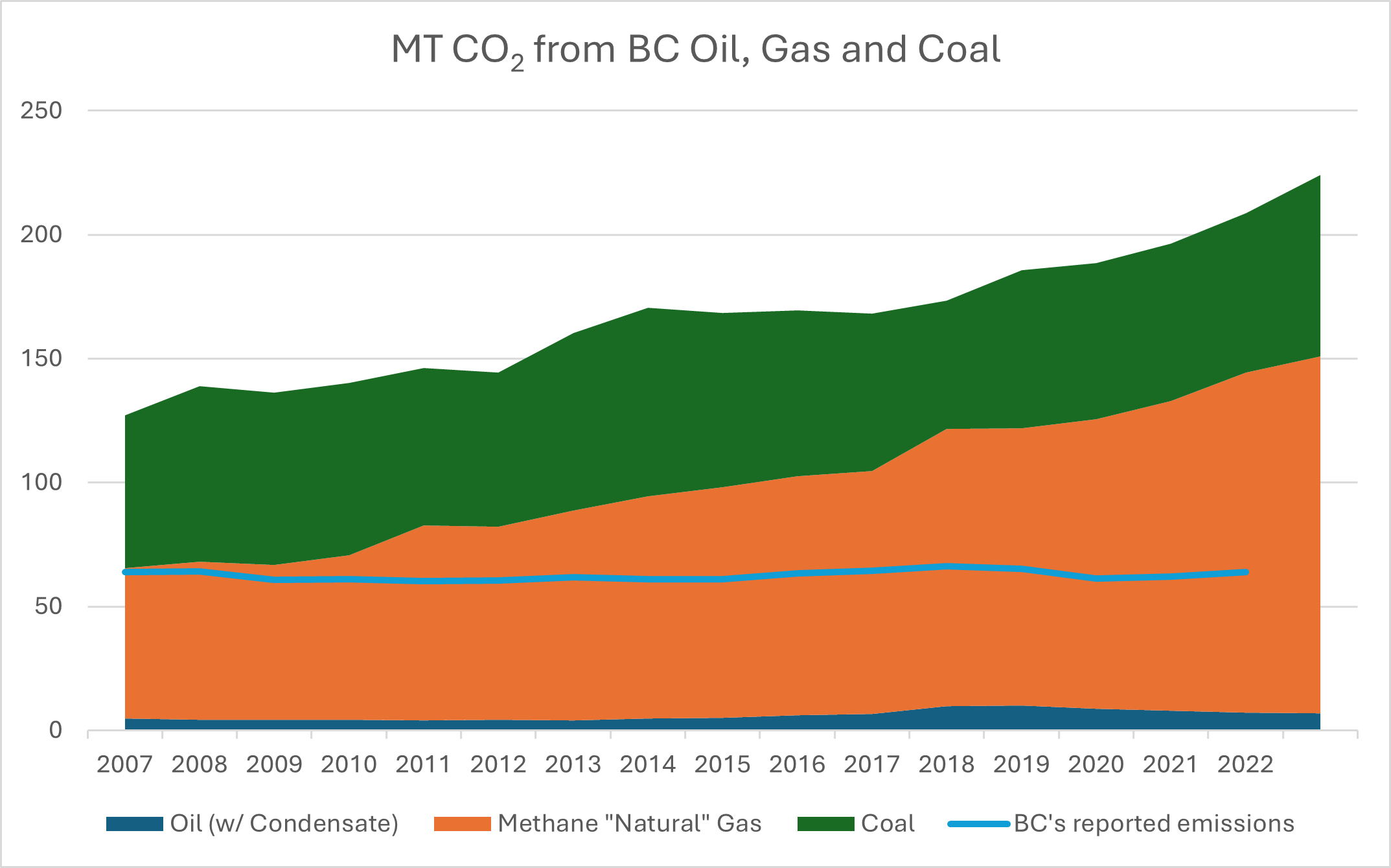
As we head into election season in BC, brace yourself for a lot of talk about managing taxpayer dollars and balancing budgets. But let’s make sure that politicians can’t duck a pressing financial question that’s only getting worse: how are we going to pay for the rising costs of climate change?
The Sue Big Oil campaign and West Coast Environmental Law have been working hard to force our local elected officials to grapple with these questions. After all, local governments own 60% of public infrastructure and are on the front lines of dealing with climate costs, with few options to pay for rising costs.
But that doesn’t mean that the provincial government should be let off the hook. No level of government can claim to be a fiscal manager of taxpayer dollars while turning a blind eye to the massive bills they are incurring as a result of fossil fuel pollution and the climate crisis.
So in anticipation of this fall’s election, here are three questions to ask your local candidates:
- Will you figure out and spend what’s needed to keep us safe from climate change?
- What will you do to ensure that the costs of climate change are shared with fossil fuel companies?
- How will you deal with the reality that BC’s oil, gas and coal contribute to climate change?
1. Keeping British Columbians safe from climate change
Climate change is costly – that much is clear. We saw that in 2021, when 600 people died to a heat dome, the village of Lytton burned down (still not rebuilt) and floods, wildfires and heat cost the BC economy an estimated $10.6 billion to $17.1 billion (as much as 5% of the province’s GDP).
There are plenty of examples of more recent climate costs, including the record-breaking billion dollars spent fighting fires in 2023, and the evacuations that many have experienced.
Governments are increasingly recognizing that we need to spend money to protect us from the costs of climate change. Experts say that for every dollar spent on “adapting” to the changing climate, we save about $5-6 in direct costs, and a further $9 indirectly.
So are provincial decision-makers taking this to heart? Often, you can tell how seriously a government is taking something based on whether they actually know how much it will cost and have a plan to pay for it.
Yes, the government is spending money on climate adaptation. Budget 2024, for example, committed approximately $101 million a year for four years to “bolster the province’s capacity to prepare for and respond to future climate emergencies.”
But the figures we have from the BC government estimating what they should be spending (which are unfortunately few and far between) suggest that those amounts are entirely inadequate. For example, BC’s 2018 flood and wildfire review says $6.7 billion is needed to treat provincial lands that posed moderate or high wildfire risks. A 2012 study commissioned by the Province estimated that protecting the Lower Mainland from sea level rise will cost $9.5 billion in the coming decades.
We can also look to the research on climate adaptation costs facing communities in the US, such as the recent reports that by 2040 Pennsylvania needs to spend at least $15.47 billion USD, and Los Angeles County $12.5 billion USD, to avoid the worst impacts of climate change.
The costs of making our communities climate-resilient are in the tens of billions of dollars. The costs of failing to do so are many times larger.
The BC government claims that it is planning to prepare for climate change through the Climate Adaptation and Preparedness Strategy and a list of “Phase 1” initiatives intended to keep British Columbians safe. However, it has not done the work to figure out how much it needs to spend to pay for that strategy, and it is very difficult to figure out which of the measures committed in the Strategy to are being funded (in addition, a promised “Phase 2,” due in 2022, has never materialized).
So we need to ask our elected officials and election candidates both about understanding what needs to be done but also whether they will prioritize the funding needed to keep us safe:
Will your government figure out what needs to be done to make our communities resilient to the huge shifts in our global climate, and will you spend what’s needed to keep us safe from climate change?
2. The fair share of climate costs
As discussed above, the amount we should be spending to prepare for climate change runs into the tens of billions. The amount that we are already spending to recover from climate disasters also runs into the tens of billions.
According to the Canadian Climate Institute report Damage Control, by 2025 climate change will already be costing the Canadian economy about $24 billion each year and Canadian governments will be spending an average of $5 billion each a year on climate disaster recovery. The economic costs will continue to rise dramatically thereafter, although spending money on adaptation and reducing emissions can keep the bill more manageable.
Climate change means that we face dramatic tax increases, cuts in government services and unacceptable risks of climate disasters in our communities. We need to talk about how we will pay for those costs – and especially whether some of those costs should be shared by the global fossil fuel industry.
Global fossil fuel companies have played an outsized role in creating climate pollution, and made massive profits doing so, but right now taxpayers are on track to pay for the damages caused by climate change. The fossil fuel industry became aware that their products cause climate change decades ago, and responded to that information by launching misinformation campaigns and lobbying against any actions which might have moved consumers towards less harmful sources of energy.
Increasingly, governments around the world are demanding that these companies pay at least some of the resulting costs.
The States of California and New Jersey, and many other US state and local governments, are suing fossil fuel companies, alleging that their history of deception violated legal rules. Here in BC, the Sue Big Oil campaign has called on local governments to take similar action. In our view, and in the view of 28 law professors, there is a solid legal basis for such a claim, even against global fossil fuel companies.
The State of Vermont has recently taken a different approach, enacting a “Climate Superfund Act.” The legislation, developed with bipartisan support and signed into law by the Republican Governor, directs state officials to calculate the climate costs incurred in the state between 1995 and 2024, and then instructs the State Treasurer to send a bill to fossil fuel companies. This approach bears some similarity to the legislation enacted in BC to make it easier to sue the manufacturers of tobacco and opioids, and we’ve proposed similar legislation to allow British Columbia to recoup climate costs from Big Oil in the past.
These and other approaches that our next BC government could use to hold fossil fuel companies accountable for a share of climate costs. But the question to be asked is:
Do you support BC taking legal action to recover a fair share of the climate costs BC has experienced from fossil fuel companies?
BC has spent billions of dollars fighting wildfires, fixing highways after landslides, dealing with floods and addressing other climate impacts. How will you prevent taxpayers from bearing unfair costs of climate change?
3. Responsibility for BC's oil, gas and coal
It is not widely known, but BC doesn’t just regulate the production of oil, gas and coal in the Province. With a few exceptions it owns oil, gas and coal, which it sells to the fossil fuel companies that then find, develop and extract those fossil fuel resources. As the BC Energy Regulator (formerly the Oil and Gas Commission) explains in a publication for landowners:
The Crown owns the majority of subsurface rights, including rights to materials such as fossils, minerals, coal, oil, petroleum, natural gas, and geothermal resources. … [T]he surface owner of property rarely owns the subsurface rights, except in areas of early settlement such as Vancouver Island and the Fraser Valley.
BC set its first legislated climate targets in 2007. But since then, the Province has dramatically increased the amount of the publicly owned methane (or “natural”) gas that it sells to fossil fuel companies, while maintaining the levels of coal production (there has been a modest decline of oil production).
Most of the emissions from burning that methane gas, as well as from oil pumped and coal mined in BC, are not included in the Province’s climate plan and the greenhouse gas emissions that it reports. This is because internation rules for counting greenhouse gases focuses on the greenhouse gases actually emitted within a jurisdiction’s borders.
However, that doesn’t mean we can just ignore our responsibility for the fossil fuels produced in BC. The reality is that the vast majority of the fossil fuel resources that BC sells to fossil fuel companies will be burned as fuel, and end up in the atmosphere, warming our planet. In the words of a recent UK Supreme Court decision:
It is known with certainty that the extraction of oil … would initiate a causal chain that would lead to the combustion of the oil and the release of greenhouse gases into the atmosphere. … [T]his chain of events and the resulting effects on climate are not merely likely but inevitable. … much stronger than is required as a test of causation for most legal purposes.
In analyzing BC’s figures, we found that the emissions resulting from BC-produced / exported fossil fuels are about 2.7 times greater than the greenhouse gas emissions that BC burns within its borders. The graph below shows the greenhouse gas emissions that BC reports as a blue line. Behind it are the emissions from the oil (dark blue), methane/natural gas (orange) and coal (green) that BC has produced since 2007.

The Canadian government has estimated that each tonne of carbon dioxide added to the atmosphere in 2020 will cause approximately $247 in economic harm (and rising) – so BC’s fossil fuels, when burned, will be responsible tens of billions of dollars in climate damage.
When governments (and fossil fuel companies) find out that their products are causing massive economic harm, they cannot just keep selling their products for short-term gain while taking no responsibility for the harm. BC cannot keep ramping up production of fossil fuels while claiming to be a climate leader. And it absolutely cannot keep hiding this massive carbon bomb from British Columbians by leaving these emissions out of provincial climate reporting.
How will your government take responsibility for the emissions from BC-produced oil, gas and coal, which are about 2.7 times larger than the emissions included in the Clean BC plan?
Ask questions, and then get out and vote
An election is our opportunity to ask our elected officials what their plan is to tackle climate change and a range of other challenges. But it’s important to make it clear: climate action is now a financial necessity, not a nice to have. The alternative is economic chaos. Any candidate and party that does not recognize that does not deserve your vote.
So ask your questions. And then vote.
Authorized by West Coast Environmental Law Association, registered sponsor under the Election Act, admin@wcel.org
Top photo: Province of BC via Flickr Creative Commons.